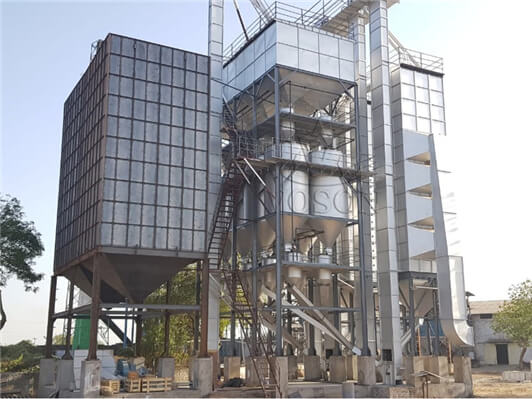Boiled Rice Mill Plant: A Complete Guide for Beginners
Rice is one of the most important staple foods in the world, and its demand is increasing every year. However, rice processing is not an easy task, especially for small-scale farmers and entrepreneurs who want to start their own rice business. That’s why a boiled rice mill plant is a good choice for them.
A boiled rice mill plant is a rice processing machine that can produce boiled rice from paddy. Boiled rice, also known as parboiled rice, is a type of rice that has undergone a hydrothermal treatment process before milling. This process improves the nutritional value, appearance, and cooking quality of rice.
In this article, we will introduce what a boiled rice mill plant is, how it works, and what benefits it can bring to your rice business.
What is a Boiled Rice Mill Plant?
A plant is a machine that uses steam or hot water to cook the soaked paddy. The cooking process gelatinizes the starch in the rice grains, making them harder and more translucent. The cooked paddy is then dried and cooled before milling.
A plant usually consists of several parts, such as:
- A paddy cleaner and de-stoner that removes the dust, debris, stones, and other impurities from the paddy.
- A soaking tank that immerses the paddy in water for several hours to increase its moisture content.
- A steaming and boiling tank that heats the soaked paddy with steam or hot water to gelatinize the starch.
- A drying and cooling section that reduces the moisture content and temperature of the cooked paddy.
- A milling section that removes the husk, bran, and germ from the cooked paddy, and polishes the rice to make it white and shiny.
- A grading and sorting section that separates the broken rice from the whole rice, and sorts the rice by color and quality.
- A packing section that packs the rice into bags or boxes.
How Does a Boiled Rice Mill Plant Work?
The working principle of a boiled rice mill plant is simple and straightforward. According to 1, the basic steps are as follows:
- The rice mill plant cleans and de-stones the raw paddy to remove any impurities and foreign materials.
- The rice mill plant soaks the cleaned paddy in water at a certain temperature and time to increase its moisture content to about 30%.
- The rice mill plant steams and boils the soaked paddy with steam or hot water at a high temperature and pressure to gelatinize the starch in the grains.
- The rice mill plant dries and cools the steamed and boiled paddy with hot air or natural air to reduce its moisture content to about 14%.
- The rice mill plant mills the dried and cooled paddy to remove the husk, bran, and germ, and polishes it to make it white and shiny.
- The rice mill plant grades and sorts the milled rice by size, quality, and color.
- The rice mill plant packs the graded and sorted rice into bags or boxes.
What are the Benefits?
A plant can bring many benefits to your rice business, such as:
- It can improve the quality and value of your rice products. Boiled rice has higher nutritional value, longer shelf life, better appearance, and easier cooking than ordinary white rice.
- It can increase your rice yield and reduce your production cost. Boiled rice has less breakage, less wastage, and less energy consumption than ordinary white rice.
- It can save your labor, time, space, and environment. A boiled rice mill plant can automate the boiling and milling process, save your manpower and working hours, occupy less land area, and produce less pollution.
If you are looking for a reliable and affordable boiled rice mill plant supplier, you can search online or contact us for more details. We are a professional manufacturer and supplier of various types of rice processing machines, including boiled rice mill plants. And we can customize our products according to your needs. We hope to hear from you soon!

